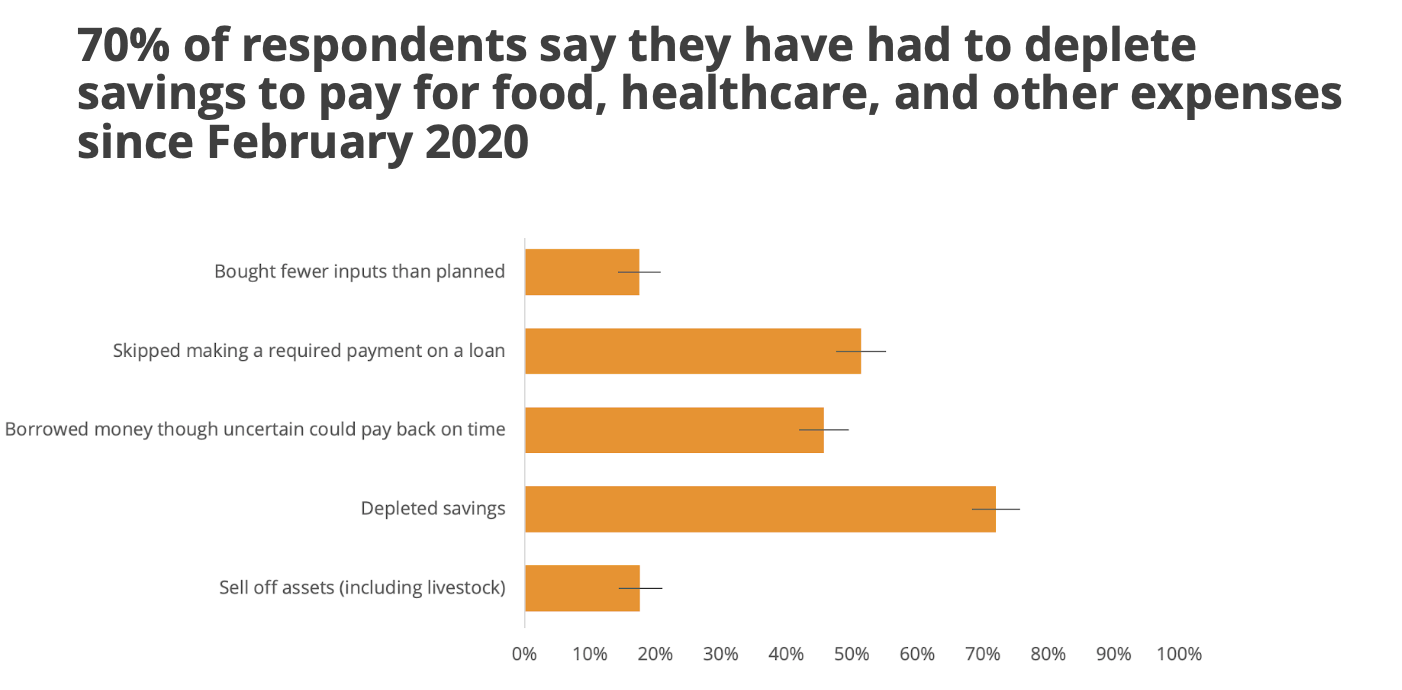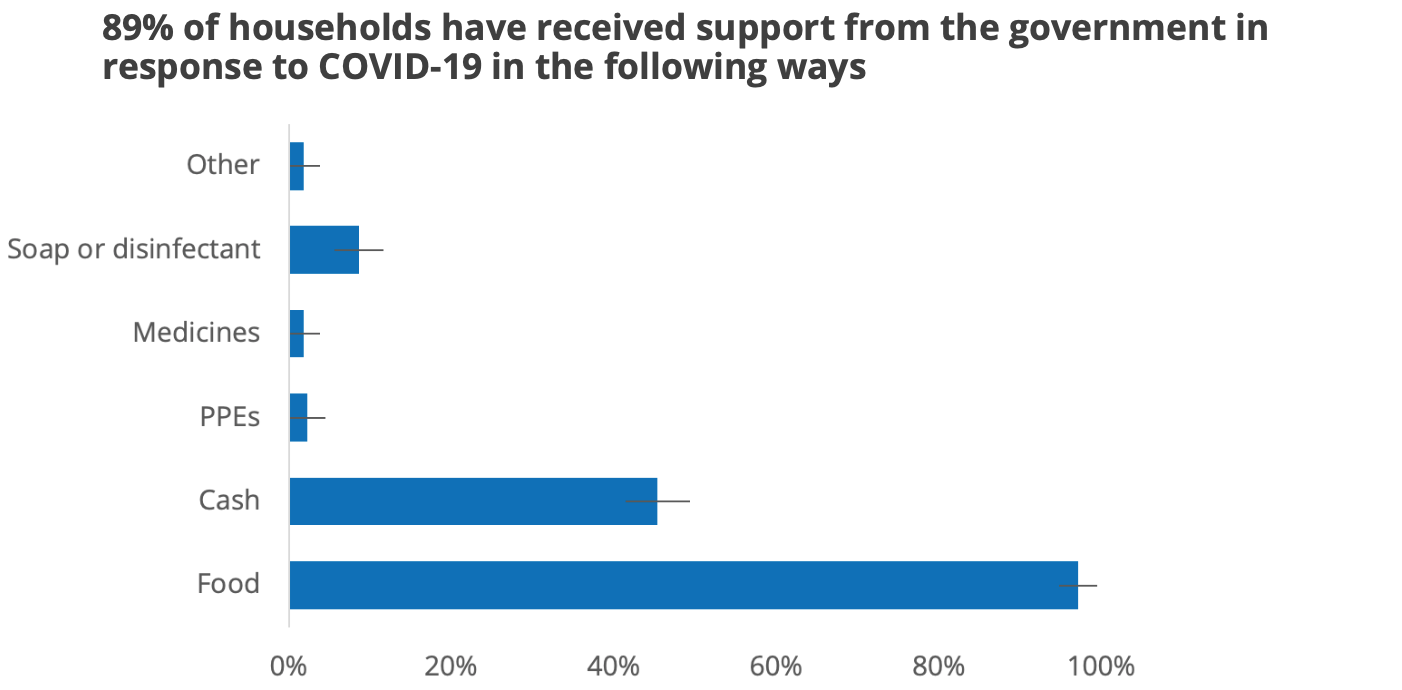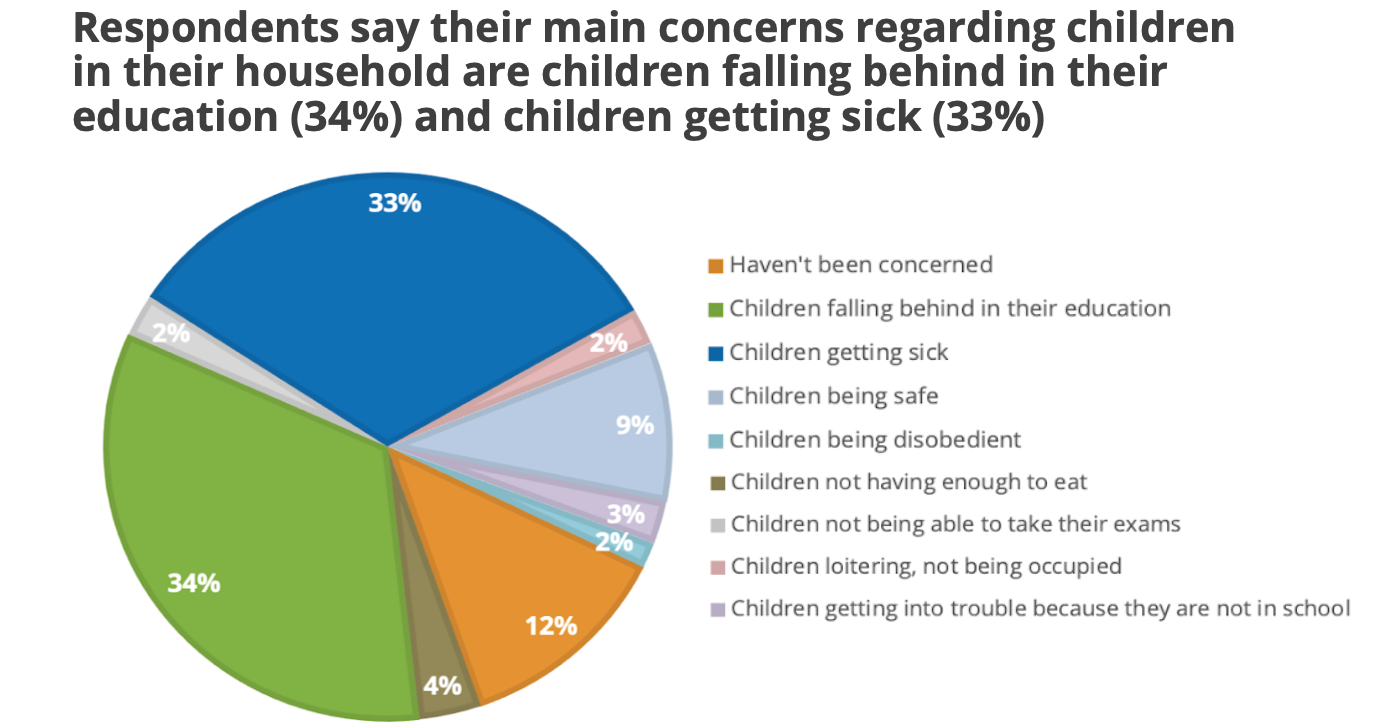Using Evidence to Inform Social Policy in the Philippines in the Time of COVID-19: RECOVR Survey Reveals Priorities for Economic Recovery
By Mariel Bayangos, Raquel Celeste, Karisha Anne Cruz, Luciana Debenedetti, Shahana Hirji, and Nassreena Sampaco-Baddiri
COVID-19’s effects are global, but local contexts characterize the virus’s specific impacts and residents’ concerns. In the Philippines, after surveying local residents, IPA found that food security, financial resilience, and educational progress are top of mind for Filipinos. And while there are promising inroads being made with new government assistance programs, policies must equitably address structural challenges with internet access, local labor market opportunities, and educational inequalities to promote long-term recovery. Read on for detailed takeaways and policy implications for understanding the impacts of COVID-19 in the Philippines.
Early relative stability with caseloads has given way to an increase in case count from June to early August. Though the country was quick to react to the pandemic—instituting lockdown measures through an Enhanced Community Quarantine (ECQ) in the National Capital Region and other parts of the country with rising caseloads from March 15-May 15, closing its borders on March 22, and issuing a national mandatory face mask policy on April 1—long-term success has proved elusive. To take back control of the spread of the virus, in early August Metro Manila reinstituted a Modified Enhanced Community Quarantine (MECQ) through August 18, and general community quarantine was instituted from August 19-September 30.
The economy has suffered over the past few months, facing its worst downturn in 30 years. Daily wage laborers are most at-risk to shocks like the lockdowns, and such workers comprise a large part of the workforce. Though estimates vary, in 2017 the ILO found that 56 percent of workers in the Philippines are informal workers. For example, the lockdowns that halted public transportation and government bans have left almost 250,000 jeepney drivers (who earn daily wages) out of work. Additionally, ripple effects of the global recession mean that remittances from overseas workers and the diaspora, which at $30.1 billion comprised almost 10 percent of GDP in 2019, are expected to contract 13 percent this year according to the World Bank, further hampering the country’s economic outlook.
On March 24, the government issued a framework of sweeping measures under the “Bayanihan to Heal as One Act” to give President Rodrigo Duterte additional powers for emergency measures in the health, economy, and social protection sectors. Of note, the law instituted the Social Amelioration Program, a two-month emergency cash transfer targeted at 18 million informal and/or poor households with transfers ranging from Php5,000-8,000 ($102-$164).
To support policymakers with timely data on the impacts of COVID-19 on Filipinos’ health and livelihoods, IPA conducted the RECOVR survey from June 18-July 1. To directly inform policymakers from the Department of Health, the Department of Social Welfare and Development, the Department of Education, and the National Nutrition Council, we surveyed 1,389 respondents1 on a range of health, economic, and education outcomes. This post summarizes the key findings and their policy implications. More information about the RECOVR survey, a cross-country panel survey that is tracking the socioeconomic impacts of COVID-19 over time in nine countries, is available here.
Respondents report compliance and trust in preventive measures
Over 25 percent of respondents feel that their household is at risk of contracting COVID-19, and for those who do not feel at risk almost 70 percent of respondents cite their adherence to preventive measures. Encouragingly, respondents report extremely high levels of compliance with mask-wearing (98 percent), and increases in handwashing since February (80 percent). 62 percent of respondents report staying home most days (4-6 days) or every day in the past week from when they were surveyed, and more than 20 percent did not stay home any days. Men were much less likely to stay home than women were, while poorer and wealthier respondents are similarly likely to have stayed home all day in the past week from when they were surveyed.
The coronavirus is not the only health concern that Filipinos are facing: almost 30 percent of respondents report that they or someone in their household have developed mental health symptoms since the quarantine began. As the World Health Organization warns that worldwide the pandemic “has the seeds of a major mental health crisis as well, if action is not taken,” the survey’s acute finding sheds light on these burgeoning impacts in the Philippines.
Economic impacts have been swift and deep
The survey reveals a picture of acute economic impact. While 67 percent of respondents worked at least one hour during February 2020, only 40 percent worked at all in the prior week from the survey. Of those still working, over 50 percent of respondents reported decreased earnings. Of the respondents that continued working in the week prior, most (62 percent) were able to do so by working from home—not a realistic possibility for many sectors such as retail or manufacturing. While women were more likely to report being able to work from home or use flexible working arrangements, women were also more likely than men to spend fewer hours working than they did prior to the start of the pandemic.
70 percent of respondents indicate having to deplete savings to pay for food since February 2020, and this is a common trend across the country. Similarly, 70 percent of respondents say they have had difficulty buying typical amounts of food because household income has dropped. In turn, 26 percent of respondents say they have had to limit portion sizes at meal times, more than 20 percent have had to reduce the number of meals eaten in a day, and more than 35 percent have reduced the kinds of food eaten in a day more than once in the past week.

Part of the food security depletions are from economic fallout, but protection measures also play a role: Almost 60 percent of respondents say they have had difficulty going to food markets due to government mobility restrictions, and more than 50 percent due to food markets being closed. Such barriers to food security and nutrition acquisition are especially concerning for early childhood development, which the National Nutrition Council has reaffirmed as a priority amidst the pandemic. IPA has shared the food security results with the National Nutrition Council, the importance of which they have reaffirmed for informing policy decisions on food security and nutrition. The government is rightly concerned about the long-term effects of food insecurity on early childhood development; in fact, one recent study in Ghana showed that even transitory spells of food insecurity were associated with poorer child development outcomes.
A majority of households surveyed are receiving government assistance through food, cash, or both
89 percent of households surveyed have received support from the government in response to COVID-19, 97 percent of which are receiving food, and 45 percent of which are receiving cash payments that they do not usually receive. Among our sample, poorer and wealthier households were equally likely to have received support from the government, even though poor respondents are more likely (10 percentage points) than wealthier respondents to say they have had difficulty buying the amount of food they usually buy because household income has dropped or the price of food was too high. Having such disaggregation can assist the government in its targeting for the Social Amelioration Program and future assistance, and is especially critical for understanding which populations may require accompanying services or resources (for example, workforce development training, or wrap-around social assistance) to foster long-term financial resilience.
During our recent webinar, Ms. Raquel Celeste (Statistician III, Policy Development and Planning Bureau, Department of Social Welfare and Development) noted the equity implications from poorer and wealthier respondents being similarly likely to receive the SAP and indicated that such findings from RECOVR support the rationale for different levels of assistance among income groups. Ms. Celeste also added that the government needs to bolster Filipinos’ capacity to save and secure emergency funds to cope with future crises and improve long-term resilience. One such way of doing so could be to redesign existing cash transfer programs, such as the Pantawid Pamilyang Pilipino program, with accompanying training or incentives to encourage saving and other positive financial behaviors. Besides government assistance, 33 percent of respondents received non-governmental support, mostly from relatives in-country, friends, and their employers.

Parents must balance concerns between the virus and their children’s education
Parents’ main concerns amidst school lockdowns are their children falling behind in school (34%) and their children getting sick (33%). Perhaps in a reflection of these tensions, 60 percent of respondents indicated that their children have already re-enrolled in school, while of the 20 percent who indicated they would not re-enroll their children in school, 88 percent cited concerns over school safety.

As online learning is the popularly viewed mode for distance learning, digital coverage emerged as a key issue in education, wherein respondents cite a lack of internet access and lack of enough devices as the top two reasons for concerns with distance learning. In this sense, most respondents (31 percent) believe that the Department of Education can assist with internet access and virtual classes to support students. As noted by Ms. Mariel Bayangos (Division Chief, Planning Service - Policy Research and Development Division, Department of Education), the RECOVR survey is “an important body of evidence” for the Department’s planning for the 2020-2021 school year. The RECOVR results confirm and complement the Learner Enrollment and Survey Form (LESF) deployed by the Department, which seeks to understand the situation and capacity of households to support the various distance learning modalities to be implemented this school year.
Policy Takeaways
Digitization for recovery: While there have been improvements in recent years in access to financial services in the Philippines, only 53 percent of wealthier households and 47 percent of poorer households in our survey say they have access to an account (bank or mobile money) where they can make and receive payments. This large gap in financial access and digitalization has been identified by the World Bank as a key obstacle for long-term financial stability. As the government considers continuing cash transfers and other social assistance programs, digitization will be key. The Department of Social Welfare and Development, for example, has incorporated digitization of the SAP for its second phase to promote efficient, targeted distribution and contactless transfers to reduce the risks of COVID-19, which, as a secondary effect, could incorporate more households into the country’s digital finance ecosystem. As such, it is critical that the government understand beneficiary experience and pain points to determine how to improve the effectiveness of national cash transfer programs.
Reaching students at their level: With parents concerned that students will fall behind academically, it will be critical for the Department of Education to design curricula and programs that incorporate potential learning losses that may have occurred during distance learning (particularly because of differential access to the internet and learning materials). Teaching at the right level is a promising evidence-based approach that will allow teachers to assess primary school students’ math and literacy acquisition, and adjust their lessons based on students’ actual levels to strengthen their foundational skills. The Department of Education’s main priority is to ensure continuity of learning, even amidst continued challenges.
Strengthening local labor markets and SMEs: With projected declines in remittances, there will be increasing demands on the local economy to provide opportunities to strengthen Filipinos’ livelihoods. Ensuring that government approaches to expanding local labor markets and strengthening SMEs are evidence-based and responsive to timely data will be an important facet of the country’s economic development.
1 We conducted random digit dialing of a representative sample of phone numbers within the TNT network, which offers prepaid phone numbers. As such, our survey is not nationally representative. Compared to 2015 Census averages, respondents in our survey are younger (32 y.o. vs. 52 y.o.), more female (70 percent vs. 49 percent), more urban (from the National Capital Region; 19 percent vs. 13 percent), and more educated (52 percent vs. 25 percent completed secondary school). Respondents came from comparable average household sizes (4.8 vs. 4.6).
Raquel Celeste is a Statistician at the Department of Social Welfare and Development, Philippines.
Mariel Bayangos is a Learner, Education Advocate, and Policy Analyst for the National Capital Region of the Department of Education, Philippines.
Nassreena Sampaco-Baddiri is the Country Director for IPA Philippines.
Karisha Anne Cruz is a Policy Associate for IPA Philippines.
Luciana Debenedetti is a Temporary Senior Policy & Communications Associate for IPA.
Shahana Hirji is a Policy Manager for IPA.











